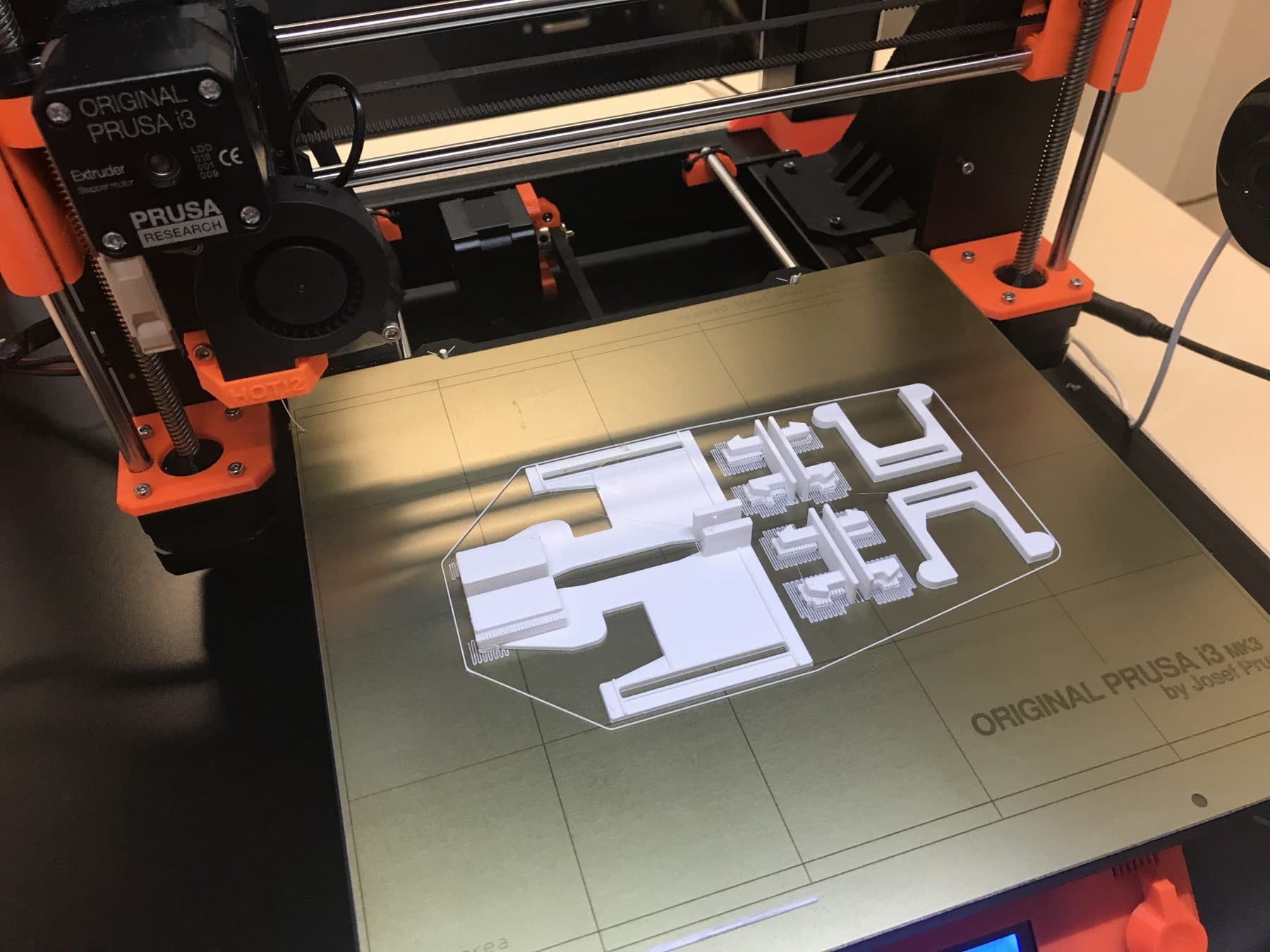
| Mar 21, 2019
A Trajectory for 3D Printing
3D printing (otherwise known as additive manufacturing) is a highly versatile method of production that has experienced rapid technological advances since its inception in the 80s. Originally protected by patent laws, recent interest in 3D printing has allowed for more mainstream and accessible printer models to hit the consumer markets.
This method of printing utilizes 3D models and raw material inputs, typically in the form of a filament spool, to produce a finished product layer-by-layer through a robotic arm. While the 3D printing method offers endless possibilities, the creations don’t appear instantly; they also require more set-up time than traditional 2D printing. Even the most advanced 3D printers on the market still require significant troubleshooting.

Printing a replacement part to the 3D printer.
The median price for a competent hobby 3D printer ranges from $500 to $1,500. More advanced printers (ranging in price from $2,000 to $6,000) are typically sold in a designed enclosure and offer more robust controls and monitoring systems that allow for larger volume printing and materials. The most advanced printers can easily cost $100,000 or more.
There are several types of 3D printers on the market today and they all share the commonality of utilizing 3D computer models. The most common printer is a Fused Deposition Modeling (FDM), which utilizes a spool that feeds a heated nozzle to melt the raw material and print it on a preconfigured path in layers that bind to each other, accumulating to create the 3D model. By far the most common printing methodology today, FDM offers a wide combination of colors and materials.
Another type of 3D printing uses stereolithography (SLA) technology, in which LED/lasers congeal liquid into a solid surface one layer at a time. While SLA is faster than FDM and can produce medical-grade parts, the printers typically have a smaller footprint and are more expensive.
Today, the strongest case for utilizing 3D printing is in prototyping and assessing design reiteration before proceeding to large-scale manufacturing. Real-world applications include commercial product design prototypes, medical devices, and construction applications.

3D printed pendant light.
In construction, 3D printing allows us to create customizable structural connections that leverage repetitive design. However, the current technology lacks the infrastructure needed to support typical mass production in an assembly line setting. While full-scale building modules have been produced in small numbers, they are mainly experimental and rudimentary in design. 3D printing will become more applicable through the supersizing of the traditional 3D printer concept to an industrial scale gantry crane that leverages the same variable plane movements, generating layering of materials such as cement or other composite mediums. Further advancements include developments in printing design, such as robots with six degrees of movement, rather than the single robotic arm, to allow for a wider range of movement and materials. Currently, these advancements are in testing for the welding of a steel footbridge while self-building the track, which allows the printing robot to progress without additional scaffolding or supports.
The AEC community is just beginning to incorporate 3D printing as a more applicable method of manufactured construction. It has yet to be fully embraced due to the technical nature of 3D computer modeling and the need for calibration and troubleshooting. These challenges will lessen over the next five years as printers become more reliable and the available 3D model libraries are streamlined to support the general consumer. Amazingly, 3D printers can print their own replacement parts, and it’s likely that in the future they will be able to analyze and repair themselves.
Manufacturing has long relied on robotics and automation, but the construction industry faces the challenge of the incredibly variable nature of job site locations, project scopes, and client-specific features. Artificial intelligence (AI) can address these variables by learning the unique conditions that occur with standardized sub-assemblies.
Ultimately, the lack of population growth and a shortage of qualified labor will drive the construction industry to look to technology for solutions. In the next 20 years, the combination of 3D printing methods, new material options, and artificial intelligence (AI) will revolutionize the manufactured construction industry.

